Queen
Danaus gilipus
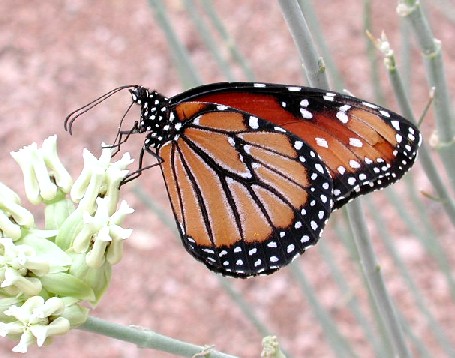
This butterfly was photographed using a Nikon CoolPix 990 on 13 Oct. 2002 at the Desert Botanical Garden, Phoenix Arizona. It is taking nectar from flowers of Desert Milkweed (Asclepias subulata). It has a wingspan of roughly 110 mm.
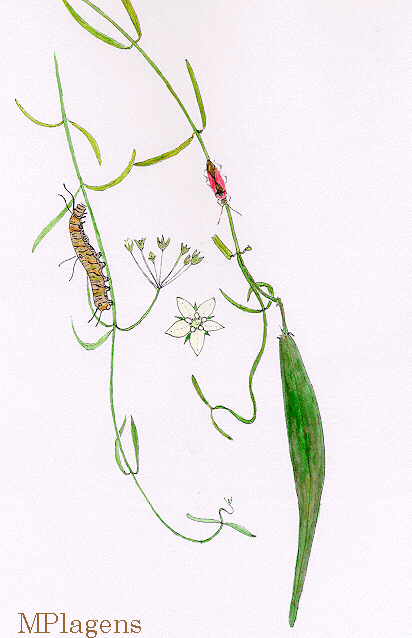
Water color illustration by Michael Plagens. The vine, Climbing Milkweed serves as the larval host. The red and black bug is
Nymphalidae -- Brush-footed Butterfly Family
The Queen Butterfly is a smaller, darker relative of the Monarch Butterfly. Unlike the monarch, queens do not migrate. In the Sonoran Desert is a permanent resident where the caterpillars feed on various species of milkweed, such as Climbing Milkweed (shown in lower left figure). The adults are avid flower visitors and on rare occasion they may become prey to a spider waiting there.
The larva (caterpillar) of the Queen Butterfly has alternating bands of orange, black and red that are smudged together. Climbing milkweed vine is common in the Sonoran Desert and is frequent in urban areas on fences.
More Information:
- Butterflies and Moths of North America
- Bugguide.net -- Univ. of Iowa
- Google Images
- Google Scholar Literature Search
- Book Reference: Butterflies of Southestern Arizona by Richard Bailowitz & Jim Brock available at Sonoran Arthropod Studies.
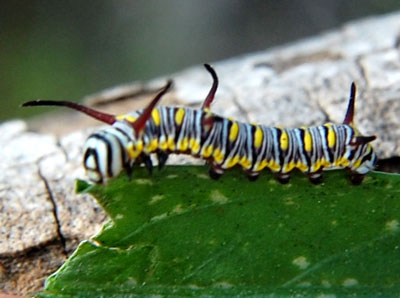
This queen butterfly caterpillar was found in Bulldog Canyon, Goldfield Moutains, Oct. 2008.
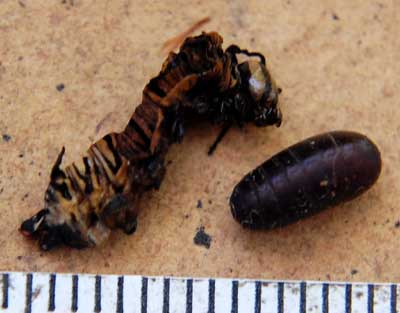
A few days later the caterpillar's crumpled exoskeleton was lying next to the puparium of a tachinid fly. The larva of the fly had eaten the caterpillar from the inside out snatching the life of the butterfly to become instead a fly. If natural controls such as this did not exist the Queen Butterflies would become over abundant and their worms would eat up every last leaf of milkweed crashing the population permanently! Ruler is in mm.
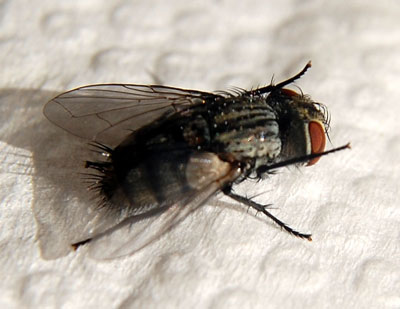
At first glance a tachinid looks like an ordinary fly. It doesn't, however, breed in garbage or other human filth. As adults they are most likely to be seen visiting flowers, where some species are no doubt, important pollinators. From Bulldog Canyon, Goldfield Moutains, Oct. 2008.